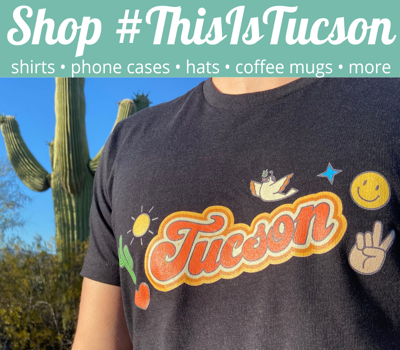The following is the opinion and analysis of the writer:

David DeGroot
Southern Arizonans recently pushed limits when 43 citizen scientists made their way into the remote Barrel Canyon in the northern Santa Rita Mountains. Their purpose: cooperate in an intensive wildlife study in a remarkable place with an uncertain future. We called the effort a BioBlitz.
Pima County has seen a number of BioBlitzes over the last few years, and many residents know them as ways to understand plant and animal communities. Participants have used a cell phone app called iNaturalist to collect field observations and set up reports about species, dates and locations. BioBlitzes have been organized in urban neighborhoods, parks, or on easily accessible scenic places.
But this one was different. This research area was far back in the Coronado National Forest on roads requiring high-clearance vehicles. The rugged, 450-acre site was selected for two reasons: it sits atop an ancient aquifer, and it may be severely damaged as Hudbay’s new Copper World Mine is established in slopes above the aquifer.
Until this March, knowledge of this area has been limited pretty much to cattle ranchers, recreational shooters and hunters, National Forest Rangers, and Hudbay Mining Company operatives who purchased tracts of private land on the aquifer.
I’ve also known and loved Barrel Canyon. I’m a Sahuarita School District teacher (retired), an active docent in Madera Canyon, and a longtime hiker in the Santa Rita Mountains. In 2022 and again in 2023, I helped organize successful BioBlitzes near the Tortolita Mountains. I drew on those experiences to put together the Barrel Canyon effort.
BioBlitz participants who signed aboard were members of a half-dozen respected southern Arizona environmental organizations. The event was officially hosted by the Tucson chapter of Great Old Broads for Wilderness, led by Andrea Hoerr, a person with outstanding organizing skills.
It’s no secret that Barrel Canyon lies squarely in the sights of the Hudbay’s Copper World enterprise. The company has huge plans for mining the northern Santa Ritas. Immediately on top of the aquifer they have installed pumps capable of sucking hundreds of thousands of gallons of water up and into their operation above the canyon. The company admits it needs 2 billion gallons of water per year to support their plans. Not only that, but toxic materials are expected to leak slowly downhill from their gigantic open pit (bigger than Meteor Crater in northern Arizona) into Barrel Canyon.
BioBlitz participants knew this. Many had a David vs. Goliath attitude. Their rallying cry was “Do the Blitz; share the list.” By late afternoon on March 23, they had completed more than 400 observations: plants as modest as Lehman’s lovegrass and silver wormwood, insects such as the California warrior beetle and Sonoran tiger mantis, and mammals as large as bobcat, gray fox, and Coues white-tail deer.
Now we’re studying the 400+ sightings and boiling the list down to those we feel most confident about — creating a “Species List” of more than 160 plants and animals. We haven’t found a species of concern yet, but the list itself is a concern to many.
We are currently sharing the list with government decision-makers who need to know about the ancient aquifer and its ecosystem.
Also, we encouraged participants to take another step. On one of our handouts we included this message: “Please join concerned citizens on May 3 at the Federal Building in downtown Tucson for an important rally against the open pit mining operation that will devastate Barrel Canyon.”
So there you have it. You could say we are using the BioBlitz to work against the proposed mine in the northern Santa Ritas. Forty-three capable people joined the effort, including members of most of the active environmental organizations in Southern Arizona. This was our way of slinging a stone at the Goliath-like mining operation.
Follow these steps to easily submit a letter to the editor or guest opinion to the Arizona Daily Star.



